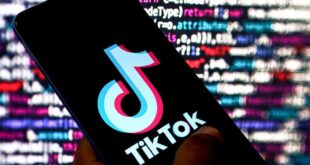This month, Google revealed its most recent effort to unseat ChatGPT, which has ruled the generative AI chatbot space since its introduction.
Early in 2023, Bard—now known as Gemini—was made available in response to OpenAI’s ground-breaking LLM-powered conversation interface. Furthermore, it has, to be honest, often looked to be playing catch-up.
Bard’s compatibility with Google’s search technology initially allowed him to access the internet. In the meantime, ChatGPT’s first release was limited to the information provided to it during training.
Connectivity
However, OpenAI quickly integrated ChatGPT with connectivity and the capacity to get other data via a connection with Microsoft’s Bing. Apart from connection, ChatGPT is superior for a wider variety of language processing tasks.
Google is now going all out, renaming Bard after the linguistic model that powers its operations and charging a premium for access to its Advanced service, designed to go against ChatGPT head-to-head.
Is it prepared to face the undefeated champion head-to-head in the ring? I’ll summarise both systems below, emphasizing the distinctions you should know when deciding which to utilize.
Firstly, it’s important to remember that the large language models (LLMs) on which Gemini and ChatGPT are built are powerful and extensive, considerably more sophisticated than anything that has hitherto been publicly accessible.
Recall that ChatGPT is only a means of communication between users and the language model, GPT3.5 for free users or GPT4 for ChatGPT Pro subscribers.
In Google’s example, the language model, which is named Gemini (or Gemini Ultra if you’re paying for the Gemini Advanced service), is a different entity from the interface called Gemini (formerly Bard).
Even though we refer to them as chatbots, there are some fundamental differences in the intended user experience. ChatGPT is meant to facilitate talks and assist in issue-solving conversationally, like conversing with a subject-matter expert.
Conversely, Gemini is designed to handle data and streamline operations to conserve the user’s time and energy.
Technically speaking, the number of parameters (trainable values) in a neural network is often used to gauge the strength of LLM models. Although it’s been estimated that GPT-4 networks have a trillion or more parameters, Gemini’s parameter use is unknown for sure.
However, knowing that both are very strong might be sufficient.
Subbarao Kambhampati, an Arizona State University AI professor, has told Wired that “most LLMs are indistinguishable on qualitative metrics.”
Put another way, what counts most is not the model’s technical strength and size but how it has been taught, adjusted, and presented to assist people in solving issues.
And the recipient is…
I’ve been using both for a while now to have a variety of chats on a range of subjects. Because of the grunt offered by GPT-4, ChatGPT is still the more capable chat interface. But Gemini is getting closer!
Data Extraction
Gemini’s default consideration of all available information, including the internet, Google’s extensive knowledge base, and its training data is one of its advantages.
Conversely, ChatGPT often attempts to respond to a query based on its training set. Occasionally, this may result in outdated information. However, you may tell it to search the web for the most recent and accurate information to get around this. However, Gemini has shown that this adds an optional additional step.
After using both systems, Gemini performs somewhat better than ChatGPT at doing web searches and incorporating the results into its answers.
ChatGPT’s replies often become less dynamic as it searches the internet for information. It usually gives the impression that it will respond to queries or answer questions based just on a single online search and one information source, as opposed to doing a thorough study of all the data it can access and drawing a judgment.
Here’s a little illustration of what this implies. AI chatbots are a handy tool for me to quickly learn about a firm, its goods, or its services. Tell me about [URL] is the same question that ChatGPT uses; therefore, it often just repeats a sales pitch from the website.
In the little time I’ve got to try it, Gemini has adopted a more sophisticated strategy. It condenses the data it can locate to provide a fair synopsis of characteristics.
Therefore, Gemini barely beats its competitor in this particular area.
However, the narrative still needs to finish there. ChatGPT continues to be the best in deftly interpreting the data it has been trained on to provide a response.
And this is the winner…
Let’s declare this a tie, with Gemini doing better when creating responses from online material and ChatGPT performing better when it comes to questions without the internet.
Multi-Modal Features
AIs that can analyze many types of data are known as multi-modal AIs. ChatGPT’s first iterations could only read and produce text. However, OpenAI’s “engine” was updated to GPT-4, which allowed it to analyze both auditory and visual input, making it multi-modal. Conversely, Gemini has multimodality right out of the box (albeit not all of its characteristics were used immediately).
OpenAI also created the DALL-E model, which ChatGPT uses to produce graphics. Conversely, Gemini makes use of Google’s Imagen 2 engine. It’s evident that both have a lot of power and can produce incredible outcomes. However, when we compare both on the same prompt, ChatGPT is more reliable in creating a picture that fits what I was looking for.
Others have pointed out that Imagen 2 and Gemini are marginally superior at creating detailed, lifelike pictures. Conversely, ChatGPT is excellent at reading cues in a creative way and excels at handling the spatial connections between things in its graphics.
They can both write and comprehend computer code in various programming languages. That being said, there are a few minor variations in their methods.
I’m not a coder, but the wonderful thing is that you don’t have to be when you have ChatGPT or Gemini in front of you.
Without a doubt, ChatGPT has some significant benefits in this situation due to its better conversational skills. It’s superior in producing understandable and beneficial information and providing recommendations and hints if you need help with what your code should accomplish or the ideal integration technique.
And the recipient is…
I’m going to offer ChatGPT this one once again. While ChatGPT produces graphics that resemble what the user asks for with their prompt, Gemini produces superior photorealistic visuals. Gemini is more adept at writing technical code. Still, it falls short of ChatGPT in providing a conversational interface for developing and testing.
(A little reminder that Gemini picture generation is still unavailable to European users; perhaps it will be introduced shortly.)
So, which is the best?
Well, neither is flawless by any means. Both continue to have hallucinations and will often provide inaccurate information. Gemini, for instance, informed me that OpenAI’s Dall-E 2 uses diffusion model technology. Additionally, ChatGPT claimed that Gemini couldn’t produce photos, even though it could.
However, if you could only choose one subscription plan, I lean toward ChatGPT Pro.
There are a few warnings: if you’re a big fan of Google products, Gemini’s compatibility with Gmail and Google Docs will probably be a big draw for you. Similarly, Gemini is an excellent option if you’re an experienced developer and your primary requirement is coding (but also check out Microsoft’s Co-Pilot).
ChatGPT is now superior for document creation and writing, summarizing, generating general-purpose images, and learning via dialogues. It continues to hold its position as the greatest presently accessible because of this. Pakish News
 Pakish News We are an interactive media group that here a purpose to update users with the latest information. Our mission is to give you knowledge not only about your surroundings. We will also update you around the Globe.
Pakish News We are an interactive media group that here a purpose to update users with the latest information. Our mission is to give you knowledge not only about your surroundings. We will also update you around the Globe.



